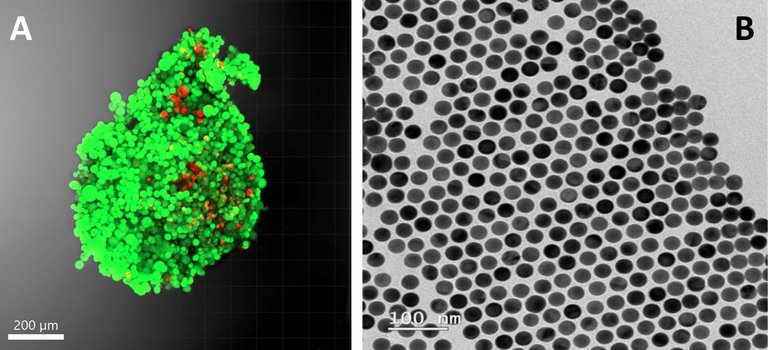They discover a new kind of interaction between tumor cells and their environment.

A study published by CIC biomaGUNE and CIC bioGUNE researchers in PNAS magazine shows that Raman surface spectroscopy (SERS) is useful for the study of metabolites secreted by cancer cells in cancer research.
The tumor microenvironment is a complex ecosystem created by interactions between tumor cells and healthy cells. It is a dynamic pseudoorgan that determines the development and progression of cancer. Traditionally, it has focused on intercellular communication via protein messengers, but has recently focused on metabolites (or small compounds) that tumors have deposited in the extracellular space.
Traditional monitoring techniques for these metabolites in complex cell contexts are limited, but increased Raman spectroscopy (SERS) of surfaces appears as a promising alternative for simple operation. Paul S. Researcher Valer explained that this study proposes a strategy based on SERS “for the study of some metabolites secreted by tumor cells without methylthioadenosine phosphorylase (the absence of methylthioadenosine phosphorylase is a common genetic fact related to poor prognosis in some types of cancer, such as breast cancer and glioblastoma”). SERS “is a spectroscopic technique that uses gold nanoparticles to detect molecules in a biofluido. It is a very fast technique, as there is no need to pre-treat the samples,” he adds.
Using SERS, researchers have found that these cells secrete purine metabolites that can be metabolized by healthy cells and therefore produce molecular changes that correspond to the aggressiveness of cancer. This explains how the tumor medium is reprogrammed in cancers without phosphorylase methylthioadenosine, which has not been seen to date: “We have been able to detect this metabolite not only in tumor cells, but also in other healthy cells that are in contact with tumour cells. That is, we have seen that tumor cells and healthy cells are interrelated through this metabolite and also modify the behavior of healthy cells, contributing in part to the development of the tumor,” said Valera. “Clarifying the complexity of these interactions in cancer patients can, in turn, facilitate access to new therapeutic approaches,” he adds.
The successful application of SERS in the study shows that this technology can expedite the rapid detection of metabolic interactions in complex environments. In fact, SERS, due to its ease and speed in the access to signals and its high sensitivity, meets the requirements of being a first-level instrument for more specific analysis. Follow-up with complementary techniques allows a complete view of the metabolic state of the tumor microenvironment. It is also important to note that an effective synergy has been demonstrated between the SERS system and other analytical methods.
Buletina
Bidali zure helbide elektronikoa eta jaso asteroko buletina zure sarrera-ontzian











